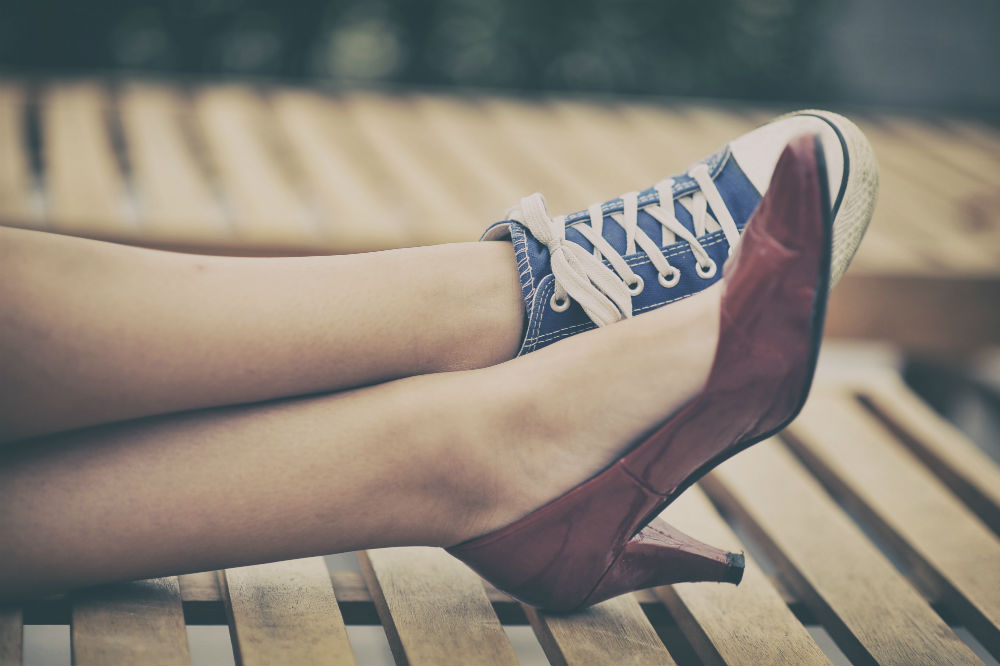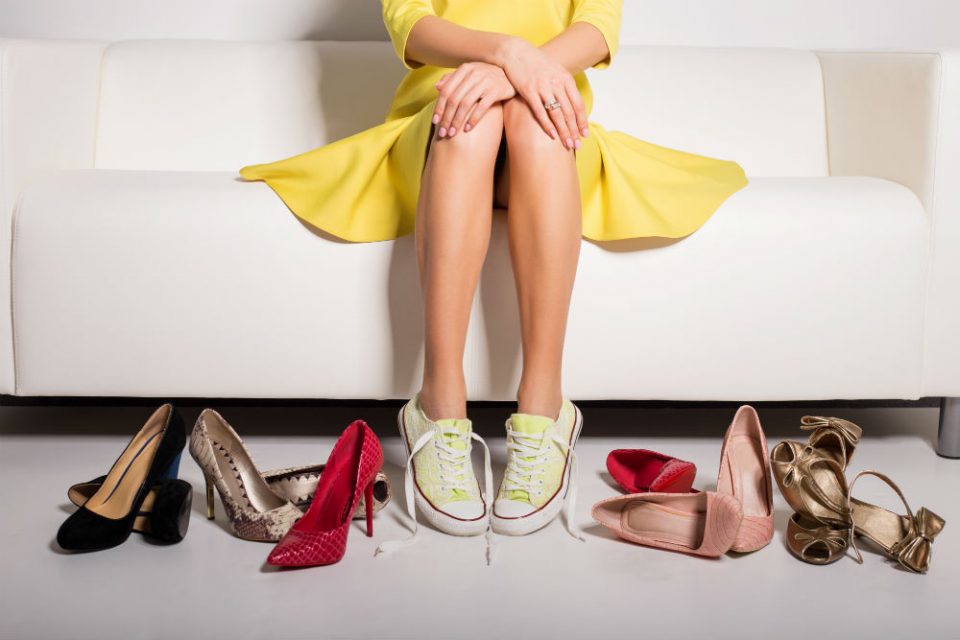
On average, women have 17 pairs and men have eight. We’re talking about shoes: cheap shoes, expensive shoes, shoes in different shapes, colors, and styles and—of course—shoes from various different brands. Yet not all shoes are created equal. We’ve probably all found ourselves getting annoyed about a pair of shoes we’ve only just bought because the quality is anything but good. How can you tell a good pair of shoes when you see them though? pjuractive has taken a closer look and reveals how to recognize a good pair of shoes.
The material
The first impression is all about appearance, so the material has a lot to do with whether or not a shoe will sell. But there are good and not-so-good materials for various styles of shoes. First of all, use your nose. Yes, you read that right. Shoes that smell synthetic and of chemicals are usually not made from very high-quality material. But what different materials are there?
Leather
Most shoe types are made of leather, as it is a very popular material. This is hardly surprising—it is sturdy, breathable, hard-wearing, and adapts perfectly to the shape of your foot. It’s not just the shoe upper that can be made of leather—the lining and outer sole can be made from it too. Not all leather is the same, however, and most people merely rely on the widely-recognized leather symbol. However, just because a shoe bears this symbol, it doesn’t mean the leather is good. It simply means the leather has come from a cow, a pig or some other farm animal. The marking says nothing about how or from where the leather comes. Instead, you should always do the pressure test on leather shoes. Simply press your thumbs into the leather. If it creases, you can assume that it won’t be long before you stop having fun in your new leather shoes.
Solid synthetic material
Besides leather, many types of shoes also come in a solid synthetic material. This category includes shoes made from rubber, for example. These types of shoes protect our feet from water without any problems. However, the problem is usually that the foot itself can’t really breathe as a result. Good solid synthetic shoes therefore have a lining made from moisture-wicking, absorbent textiles. This is something to look out for if you want to buy good high-quality shoes made from solid synthetic material.
Nylon, polyethylene, and artificial leather
Some shoes also come in nylon, polyethylene, and artificial leather. These materials are particularly popular because they can be dyed any color, providing a change from the monotone colors of leather. They are also resistant to dirt and waterproof.
Fabric
Another popular material for shoes is fabric. It is very low-maintenance and fabric is also a very durable material. These types of shoes are usually worn in summer as they are very lightweight but not waterproof.
To find out whether fabric, nylon, polyethylene, and artificial leather shoes are good shoes and of high quality, you should also do the smell test and pay particular attention to the finish.

The fit
Of all the shoes which men and women on average own, around 80 percent don’t fit properly. That’s why it’s also important to make sure they fit well. You should therefore always try shoes on properly. Either in the shop or at home if you’ve bought them online, you should walk up and down a little in your new shoes. As your foot rolls from heel to toe, there must be sufficient space for your foot in the front of the shoe. As a rule of thumb, good new shoes should be longer than your foot by a thumb’s width. They shouldn’t feel cramped and they should provide good support.
Even if you take great care in future to only buy good shoes that fit well, lots of new shoes will still give you problems with chafing and blisters. That’s why you should always either wear your new shoes in over short periods of time, or simply use our 2SKIN. The invisible gel can easily be applied to areas on your feet that regularly suffer with irritation. This forms an invisible protective film that prevents rubbing—allowing you to bear your new shoes all day long from the word go 🙂
The finish
Beside the materials, the finish is also crucial in determining whether you are buying good-quality shoes. Take a close look at the seams on your new shoes. There shouldn’t be any threads sticking out and if the stitching is crooked, that’s usually a sign of poor quality too. As well as the seams, you should also check the soles. You can use your fingers to check whether the soles come away. If they do, it’s best to leave those shoes alone. When it comes to women’s shoes, the heel is important, too. To get a decent amount of wear out of a pair of heels and avoid accidents, the heel should be securely attached. To check this, you can simply push and pull on the heel of the shoe to test how secure it is. If everything is OK, your new shoes are certain to be high-quality, good shoes.
Looking after your good shoes
High-quality, good shoes also need to be looked after appropriately. So, to get the most out of your new treasures, follow these shoe-care tips:
- Use protective spray on your shoes before wearing them for the first time. This will protect them from water and dirt.
- Use the right shoe-care products. You should use different products for leather shoes than for fabric shoes, for example. There is a wide range of products available, including in drugstores, for example.
- Look after them regularly. You will only really get a lot of wear out of your new shoes if you treat them regularly with shoe-care products and protective sprays.
- If you have cleaned your shoes, you should give them plenty of time to dry. And they shouldn’t be left to dry on a radiator or in the blazing sun, either, as this can damage the material. It’s important to leave shoes time to dry in a place that is dry but not too warm. Stuffing shoes with newspaper can help absorb the moisture more quickly.
- Give your shoes a bit of a rest, too. Leather shoes absorb moisture, for example, and they can only release that moisture if they are not worn for at least 24 hours. So, change your shoes a little more often—after all, you want to wear all your shoes sometimes, don’t you?
Once we’ve found a favorite pair, we like to wear them every day. Follow the points above the next time you go shoe shopping to make sure your next favorite pair of shoes are good shoes that you really can wear for ages 🙂